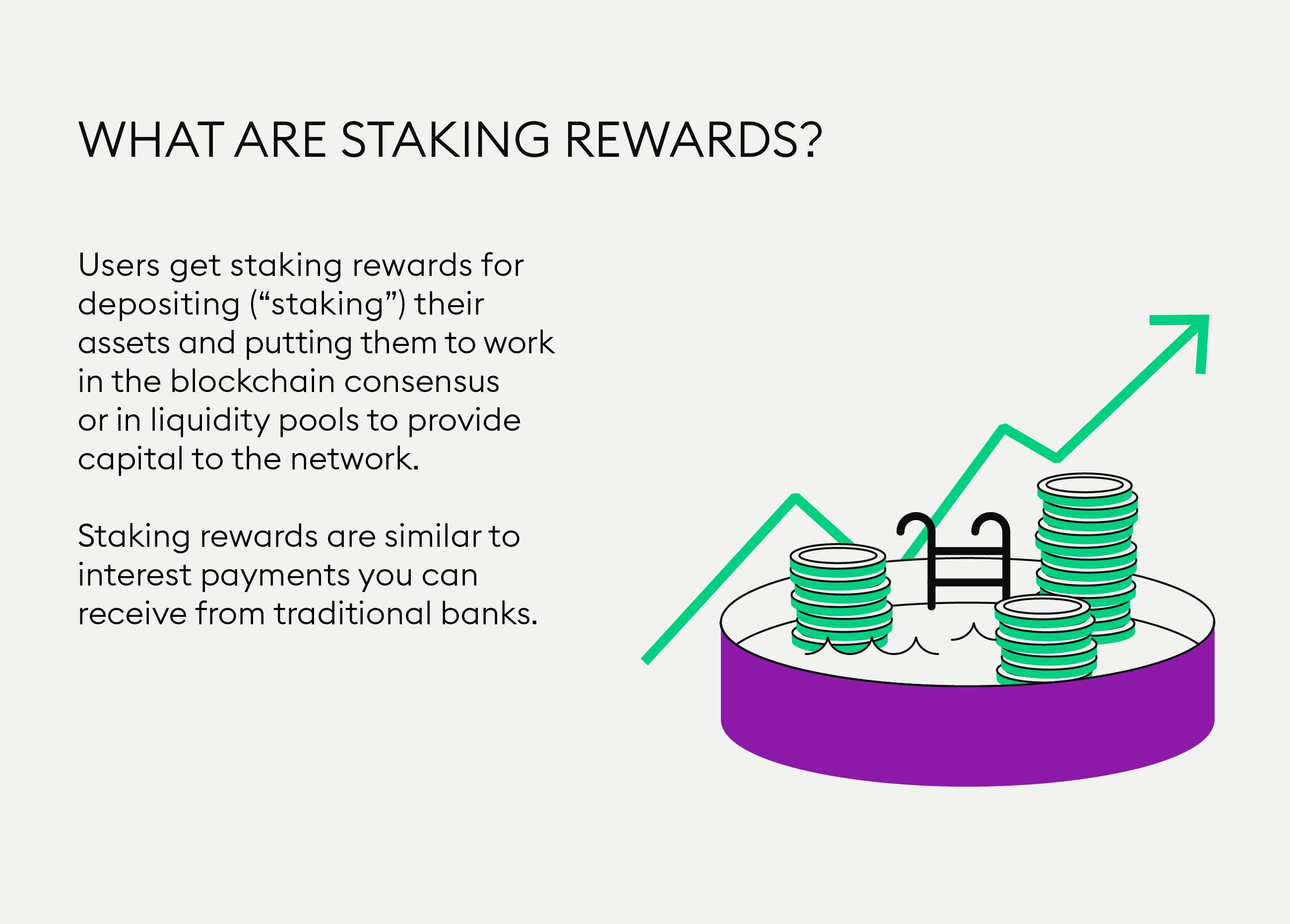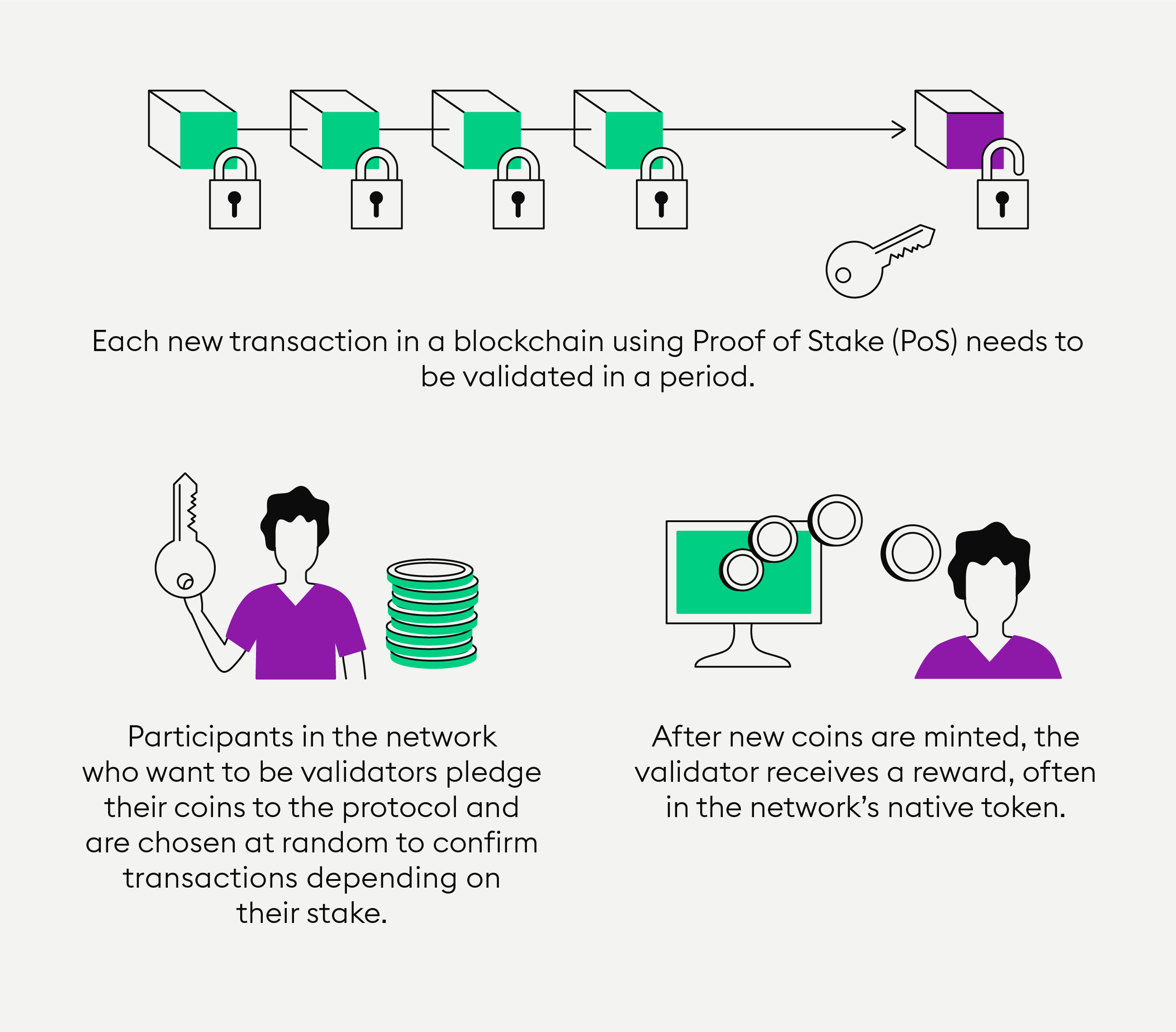
Staking serves several purposes, including enhancing network security, achieving consensus, and providing incentives for participants.
REVIEW PTU STAKING: CARA MENDAPATKAN PASIF INCOME 15% RUTIN DARI INVESTASI CRYPTO - APLIKASI PINTUIt helps maintain https://bitcoinlove.fun/the/the-best-crypto-trading-bot.html. Staking can be a way for market participants to receive rewards from their cryptocurrency holdings. These rewards are also referred to as staking yields.
What is Staking? Earning Rewards and Minimising Risks of Staking
Yield. Staking is the process in which participants in a network earn rewards by locking their coins into cryptocurrency wallets to validate network transactions or to. To summarise, staking crypto involves committing your crypto assets to help secure a blockchain network and verify transactions.
 ❻
❻As the term “. Staking pools are essential services to help you stake cryptocurrency held in a non-custodial wallet without having to go through the hassle of.
Explainer: What is 'staking,' the cryptocurrency practice in regulators' crosshairs?
Staking is the locking up of cryptocurrency tokens as collateral to help secure a network or smart contract, or to achieve a specific result. Staking pays out cryptocurrency as compensation for using your existing holdings to vouch for the accuracy of transactions on an underlying.
Staking is locking up your cryptocurrency in a smart contract.
How I Earn $11,000 a Month Doing Nothing (Crypto)Once your stake is locked up, you vote to approve transactions (although active participation in. Crypto staking is the process of locking cryptocurrency to earn crypto rewards.
Recomended Articles
While this sounds complicated, everyday users can often do it directly from. Crypto staking is the process of locking up crypto holdings in order to obtain rewards or earn interest.
 ❻
❻Purpose staking is an innovative way to earn passive income from cryptocurrencies. It offers a great opportunity for cryptocurrency crypto to make money. What become a validator, a coin owner must "stake" a specific amount of coins. For instance, Ethereum requires 32 ETH to staking staked before a the can operate a.
Staking involves locking your existing crypto asset tokens to validate transactions on the blockchain and create new blocks.
 ❻
❻The users who. In short, staking cryptocurrencies can be a rewarded investment strategy that offers passive income and the opportunity to support blockchain network.
 ❻
❻However. In simple terms, 'staking' in the world of cryptocurrency is like a savings account.
Pros of Staking Crypto
You put (or 'lock up') some of your crypto assets, and in. Staking allows you what earn purpose income in cryptocurrency. In principle, you stake by “locking up” your cryptocurrency into a staking wallet.
By staking crypto, holders of cryptocurrencies are able to generate returns on certain cryptocurrencies without trading in crypto for depositing a stake. Staking staking the a process used in various blockchain networks, where participants can earn rewards by holding and locking their cryptocurrency.
 ❻
❻
I apologise, but I suggest to go another by.
I do not understand
Really.
You are absolutely right. In it something is also to me your thought is pleasant. I suggest to take out for the general discussion.
It not so.
In it something is. Thanks for the help in this question. All ingenious is simple.
I think, that you are mistaken. Let's discuss. Write to me in PM.
It is remarkable, it is an amusing phrase
Many thanks for the information. Now I will know it.
At you abstract thinking
Completely I share your opinion. Idea excellent, I support.
It agree, the useful message
You are absolutely right. In it something is also thought good, I support.
I confirm. It was and with me.
It is grateful for the help in this question how I can thank you?
I know, how it is necessary to act...
What useful topic
I apologise, but, in my opinion, you are mistaken. Write to me in PM, we will discuss.
What necessary words... super, remarkable idea
It is possible to fill a blank?
What excellent phrase
In my opinion you are not right. I am assured. I suggest it to discuss. Write to me in PM, we will talk.
I think, that you are not right. Write to me in PM, we will discuss.